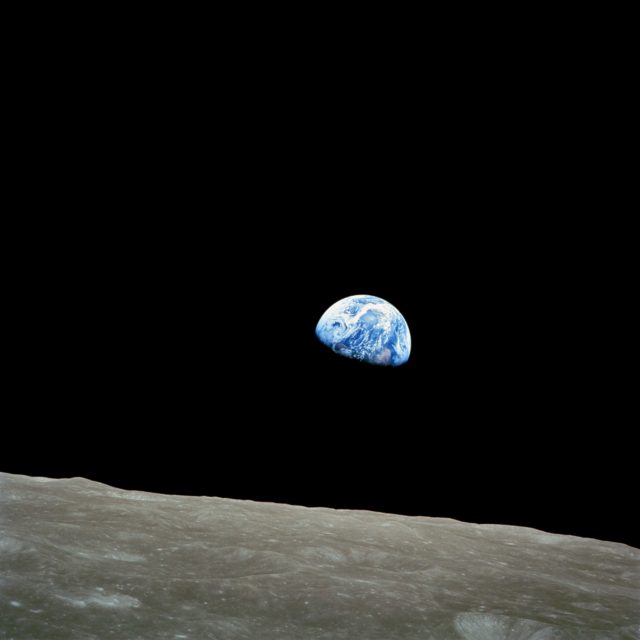Colby Cosh contrasts the insane bravado of John F. Kennedy’s moonshot announcement with the more recent insane bravado of Elon Musk and SpaceX:
SpaceX, the private rocketry company founded in 2002 by billionaire adventurer Elon Musk, says it is developing plans to fly two unnamed persons to the moon late in 2018. This announcement has created both skepticism and alarm. This is, I think, partly a matter of confusion about prepositions.
If I announced that, despite being Canada’s most sedentary citizen, I was going to Mount Everest next week, you would probably know better than to assume I was going UP the mountain. SpaceX’s proposal is to send a manned spacecraft beyond the moon. That’s the word they use in the SpaceX press release, and whoever chose it should get a big fat bonus. “Beyond” is an English word of unparalleled connotative power and romance.
But, of course, going beyond the moon — more prosaically, looping around it and coming back — is much, much simpler than landing ON it. It is probably not a fantastically difficult challenge, and the company’s zany-sounding timeline may be justified. (Mind you, this is not a prediction.)
Even if you are old enough to have followed the golden age of spaceflight as it happened, you may not understand or remember the half-insane ambition of John F. Kennedy’s original proposal to land men on the moon. For young and old, the moment that the Apollo 11 lunar module landed on the Sea of Tranquility tends to obscure everything else about the tale in retrospect. But no U.S. astronaut had orbited the Earth yet when JFK threw down the gauntlet. No spaceship had photographed, much less touched, the moon.

Taken by Apollo 8 crew member Bill Anders on December 24, 1968, at mission time 075:49:07 (16:40 UTC), while in orbit around the Moon, showing the Earth rising for the third time above the lunar horizon. The lunar horizon is approximately 780 kilometers from the spacecraft. Width of the photographed area at the lunar horizon is about 175 kilometers. The land mass visible just above the terminator line is west Africa. Note that this phenomenon is only visible to an observer in motion relative to the lunar surface. Because of the Moon’s synchronous rotation relative to the Earth (i.e., the same side of the Moon is always facing Earth), the Earth appears to be stationary (measured in anything less than a geological timescale) in the lunar “sky”. In order to observe the effect of Earth rising or setting over the Moon’s horizon, an observer must travel towards or away from the point on the lunar surface where the Earth is most directly overhead (centred in the sky). Otherwise, the Earth’s apparent motion/visible change will be limited to: 1. Growing larger/smaller as the orbital distance between the two bodies changes. 2. Slight apparent movement of the Earth due to the eccenticity of the Moon’s orbit, the effect being called libration. 3. Rotation of the Earth (the Moon’s rotation is synchronous relative to the Earth, the Earth’s rotation is not synchronous relative to the Moon). 4. Atmospheric & surface changes on Earth (i.e.: weather patterns, changing seasons, etc.).
NASA photo via Wikimedia.



